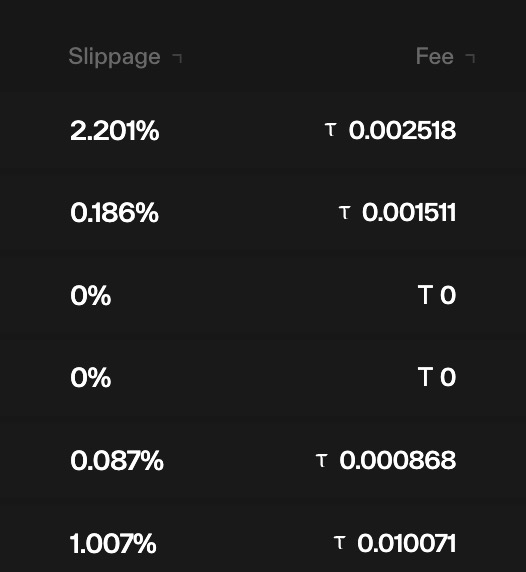Slippage
When buying or selling through a subnet (liquidity) pool, there is an inherent loss of value during the purchase called slippage.
The larger the purchase amount, the higher the slippage.
What is slippage?
Due to the limited resources of the liquidity pool, any change in the ratio of tao/alpha will effect the price and exchange rate. The act of making a purchase through the subnet pool changes the ratio, and effects the rate at which the exchange is placed.
Slippage occurs when staking AND unstaking alpha.
Slippage formulas
The tao/alpha conversion price cannot be used to calculate a transaction. You must use the following equation to determine the α_received:

The opposite occurs when unstaking alpha to buy tao:

The amount received will be less than the amount expected from the direct price conversion. The difference is denoted as slippage (generally shown as a percentage):

NOTE: Slippage is calcuated slightly differently in subnets with Uniswap Subnet Pool Liquidity activated. The basics still hold, but if buying and selling in a range with a lot of liquidity, the sippage will be lower than the calculations above.
Slippage Calculator
Live Subnet Slippage Calculator
Example 1 (large purchase = large slippage):A subnet pool has 100α and 100τ. alpha:tao is 1:1, so the alpha price is 1 tao.
A tao holder wishes to sell 1,000 tao for alpha. Following the exchange rate of 1:1, you might assume 1,000α would be received. But there is just 100α in the pool, so using the equation above 90.9α is received.
This results in a slippage of 90.91%:
Large purchases of tao or alpha will have large amounts of slippage.
Example 2 smaller purchaseA subnet pool has 100α and 100τ. alpha:tao is 1:1, so the alpha price is 1 tao.
A tao holder wishes to sell 10 tao for alpha. Using the equation for alpha_expected, they will receive 9.09α.
This results in 9.1% slippage.
Slippage values
The transaction tables list the actual slippage of a transaction. A negative slippage means your transaction actually profited from the trade

Updated 4 months ago



